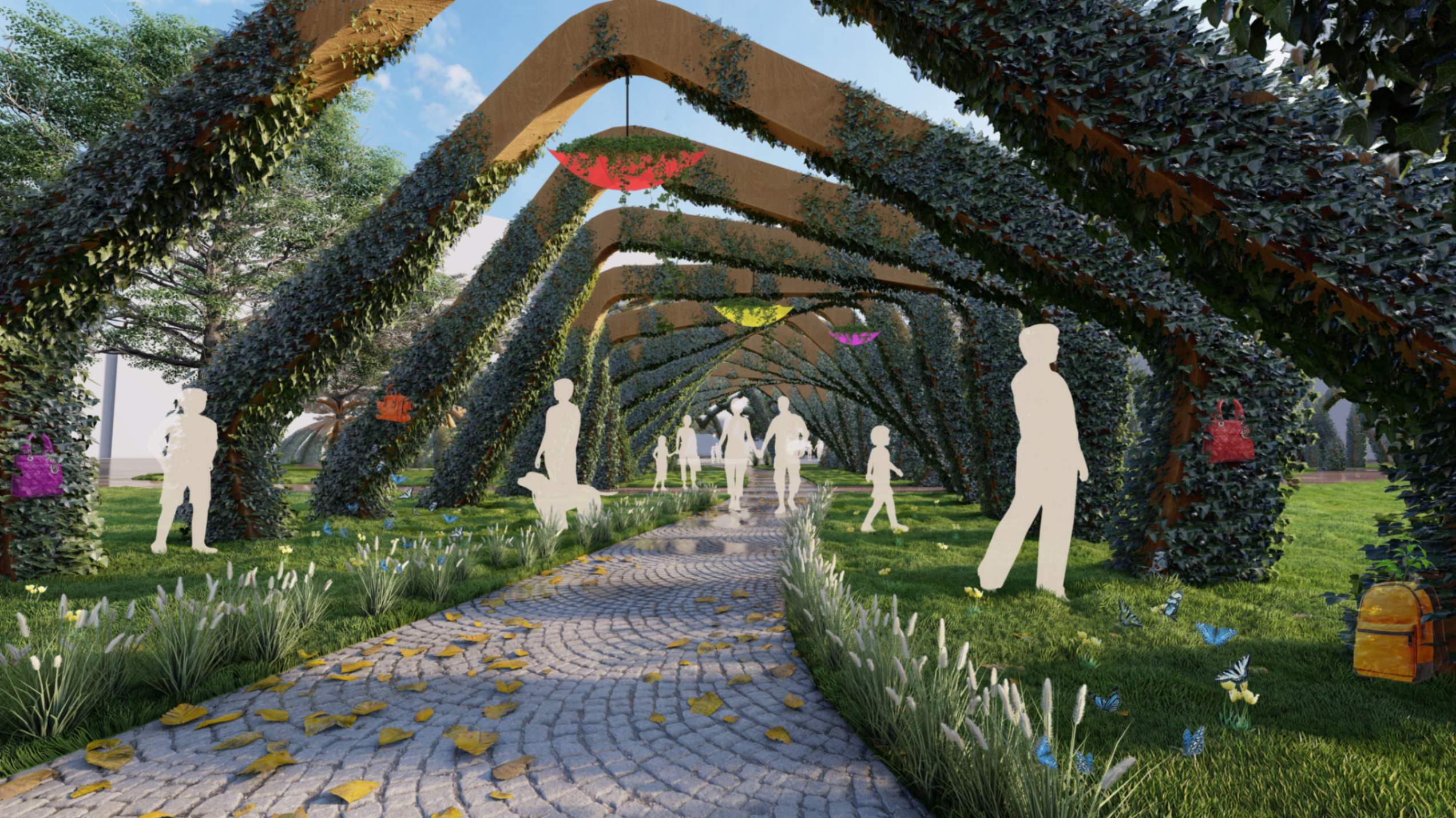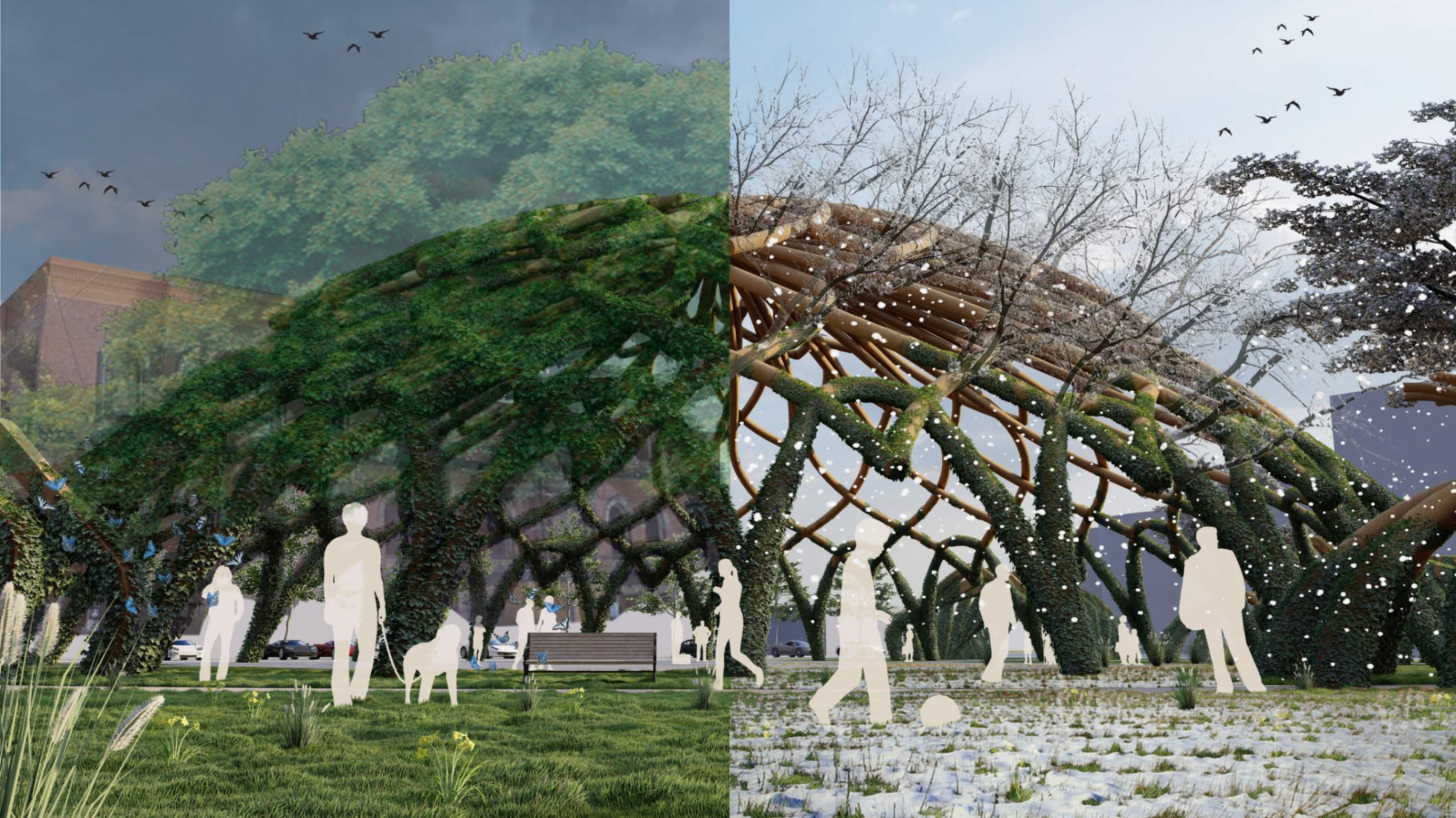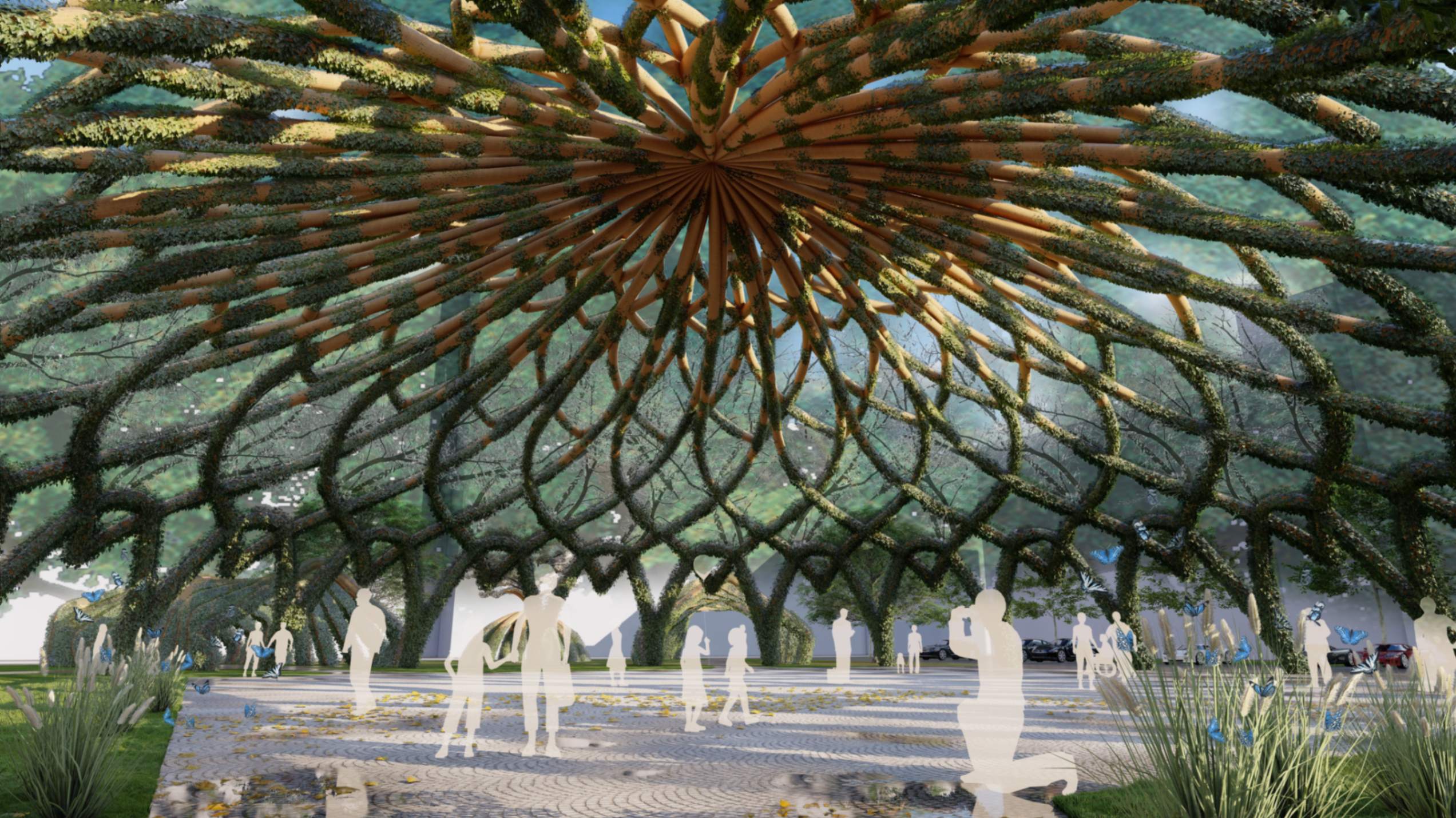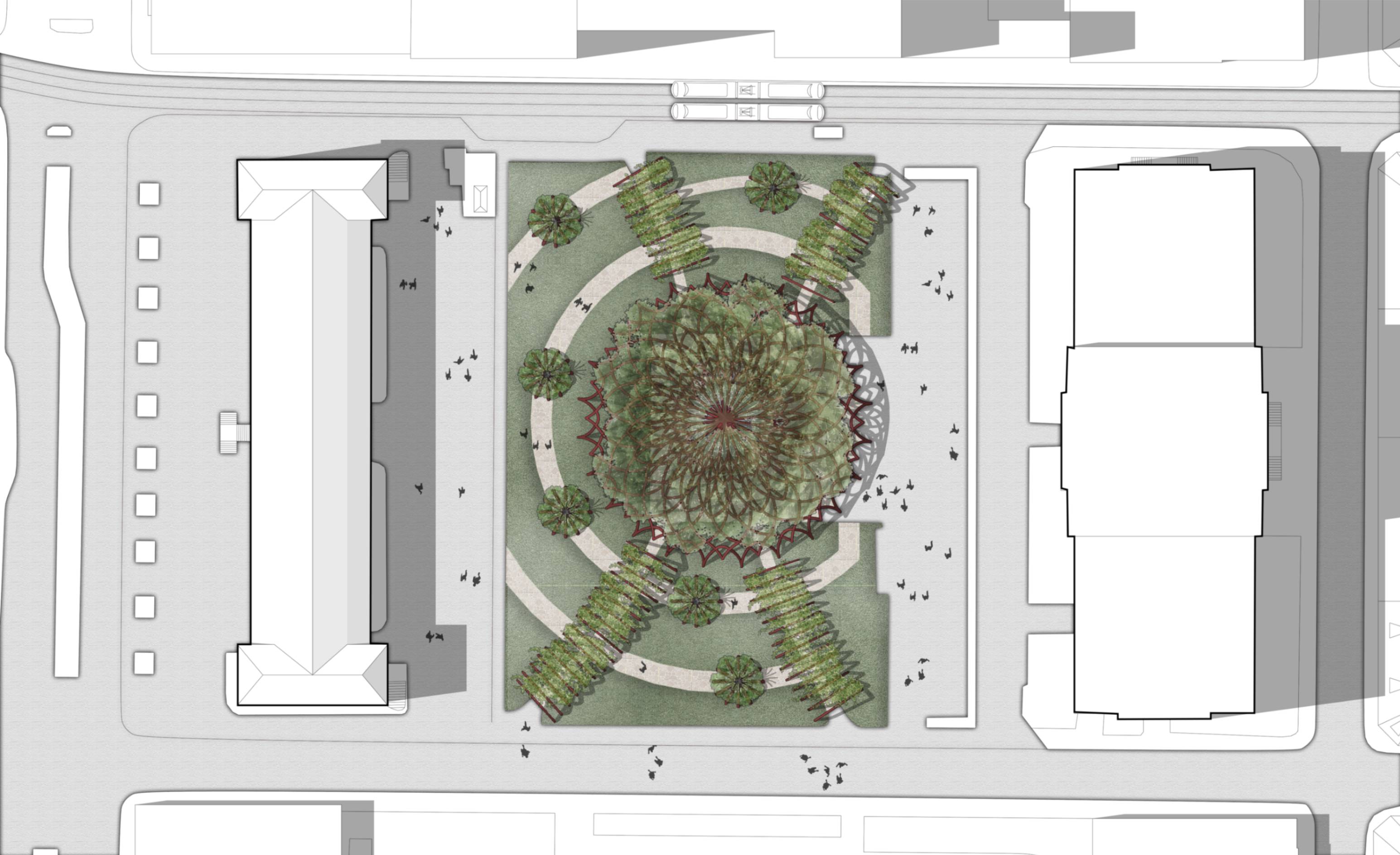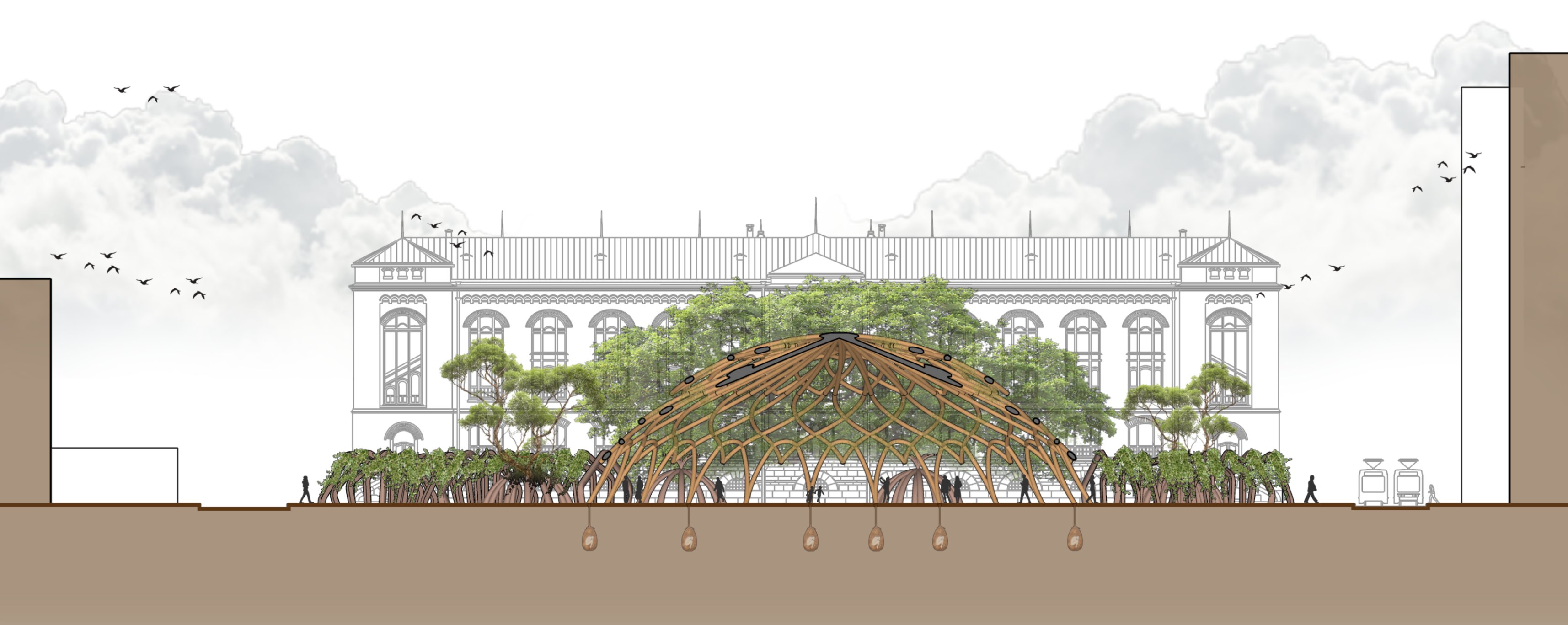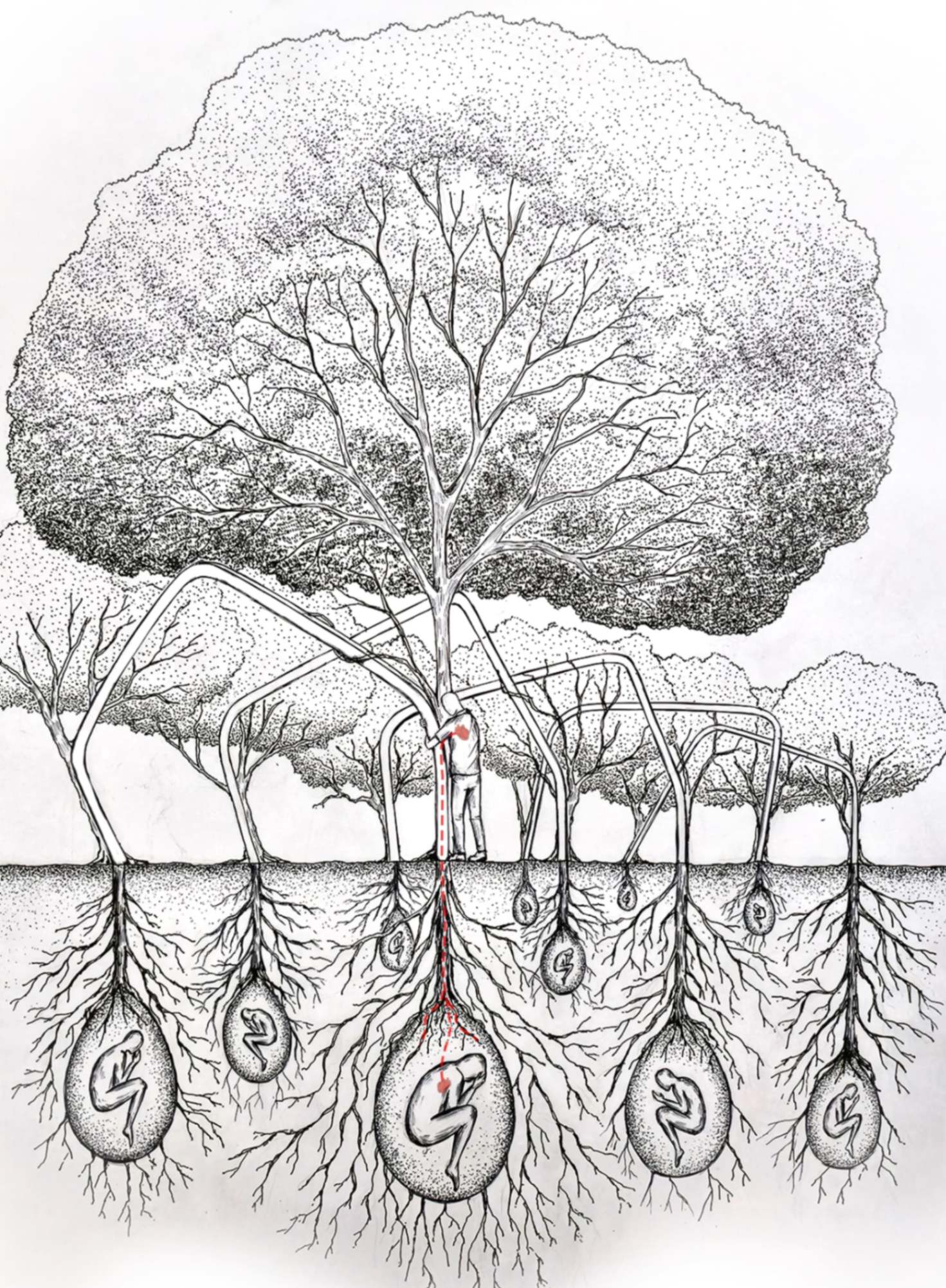All entries
Reminiscence
Plato envisions death as the soul’s liberation, a passage to eternity through reincarnation; not an end, but a transformation. The loss of loved ones is life’s deepest sorrow, an absence that lingers in memory. Baubotanik architecture intertwines living trees with technical joinery, while tree burial pods cradle remains within biodegradable cocoons, blossoming into new life. As these trees take root, an exhibition of remembrance unfolds; a sacred grove where nature bridges the living and the departed, offering a poetic reflection on all that we lose and rediscover.
This image shows the passage leading to the pavilion. It displays objects that people have lost in their daily lives; items such as umbrellas, bags, purses, and more. These are the physical remnants left behind when souls depart.
This image shows a pavilion created through Baubotanik architecture, where living trees are intertwined with technical joinery to shape the structure. The trees grow from burial pods, transforming the site into a burial ground that also functions as a public space; though not a conventional one. Here, loved ones of the departed visit the pavilion to reconnect and reminisce. Over the years, the site lacked a definitive identity, but through the permanence of death, the burial ground bestows upon it a lasting sense of place.
The pavilion symbolizes lost souls being found, their lives continued through the trees and the structure itself; celebrated through their close integration with the community.
